LETICIA CANALES – Comencé a surfear cuando apenas tenia 6 años, fue en la playa Atxabiribil de Sopela. Los motivos no son claros, solo seguía a mi hermana mayor y a mi aita, que pasaban mucho tiempo en la mar y se lo pasaban increíble. Era demasiado pequeña para ponerle un sentido a lo que después pasaría a ser mi profesión. A lo largo de los años, el surf me ha dado distintas sensaciones, como todo en la vida, me ha dado momentos inimaginables y también momentos tristes. Pero siempre hay un denominador común, me lo paso increíble en el agua y quiero volver a repetir. Está claro, cuando decidí dedicarme a ello al 100% todo cambió, se volvió mas serio, pero estoy orgullosa de haber podido manejar bien las diferentes situaciones que se han dado.
SURFING FOR LIFE – LETICIA CANALES, AINARA AYMAT & LUCIA MARTIÑO
Rosana Pérez
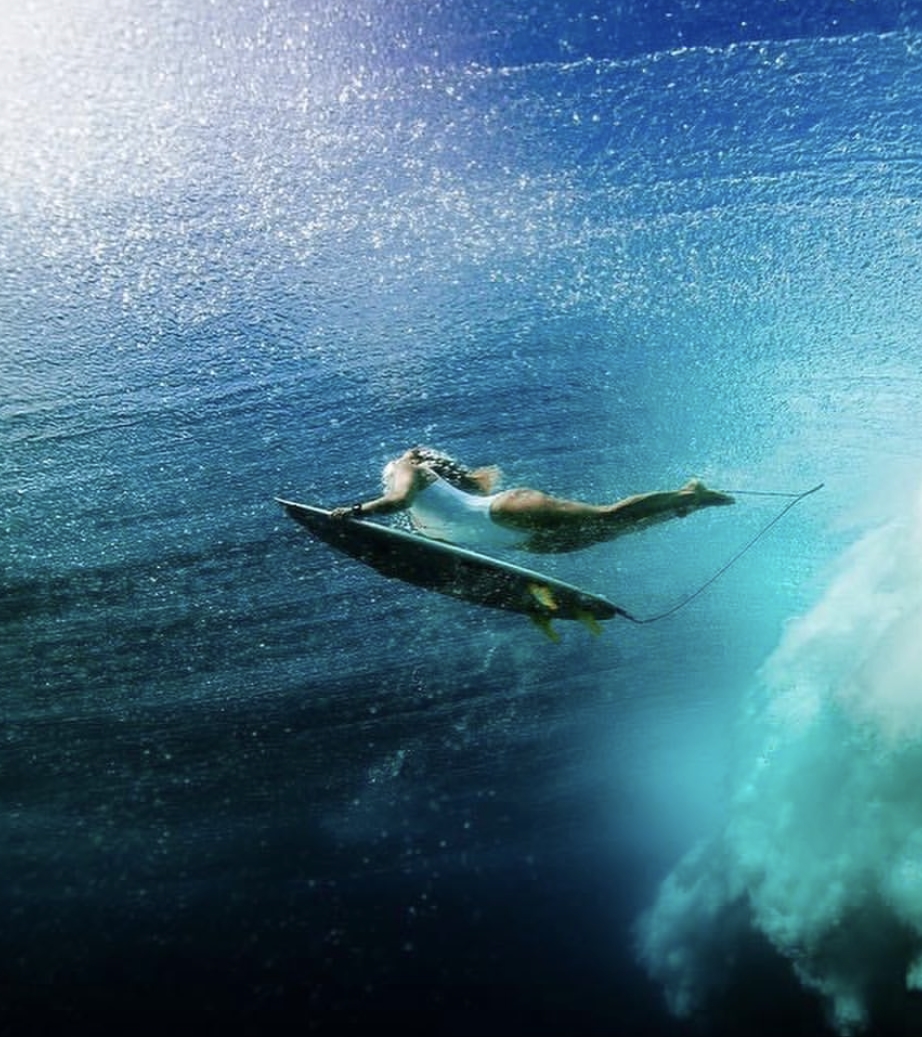
«Surfing for life» Since I was a child I have felt a special connection with surfing without knowing very well why, over the years I have discovered that this sport teaches you to enter another world, the magic that hides the ocean is its endless possibilities, one of them is to teach us to enjoy and respect it in equal parts. The laws of the sea are universal, just like its lifestyle that has an extraordinary power to make us feel free and connect us with the marine nature.I title this article after the documentary by filmmaker David L. Brown, released in 1999, in which he interviewed the heavyweights of modern surfing. Today, world surfing day, we celebrate with three women who are pillars of this sport, they are: Leticia Canales, Ainara Aymat and Lucía Martiño. To talk about their beginnings, women’s surfing and the importance of taking care of this environment that gives us all life.
«Surfing for life». Desde muy pequeña he sentido una vinculación especial con el surf sin saber muy bien el porqué, con los años he descubierto que este deporte el cuál te enseña a adentrarte en otro mundo, la magia que esconde el océano es su infinidad de posibilidades, una de ellas es enseñarnos a disfrutar y a respetarlo en partes iguales. Las leyes del mar son universal, al igual que su estilo de vida que tiene un poder extraordinario para hacernos sentir libres y conectarnos con la naturaleza marina. Título así este artículo como el documental del cineasta David L. Brown estrenado en el año 99 en el que entrevistada a los pesos pesados del surf moderno. A día de hoy, día mundial del surf junto a tres mujeres que son pilares de este deporte celebramos, ellas son: Leticia Canales, Ainara Aymat y Lucía Martiño. Para hablar de sus inicios, del surfing femenino y de la importancia de cuidar este medio que nos da vida a todos.
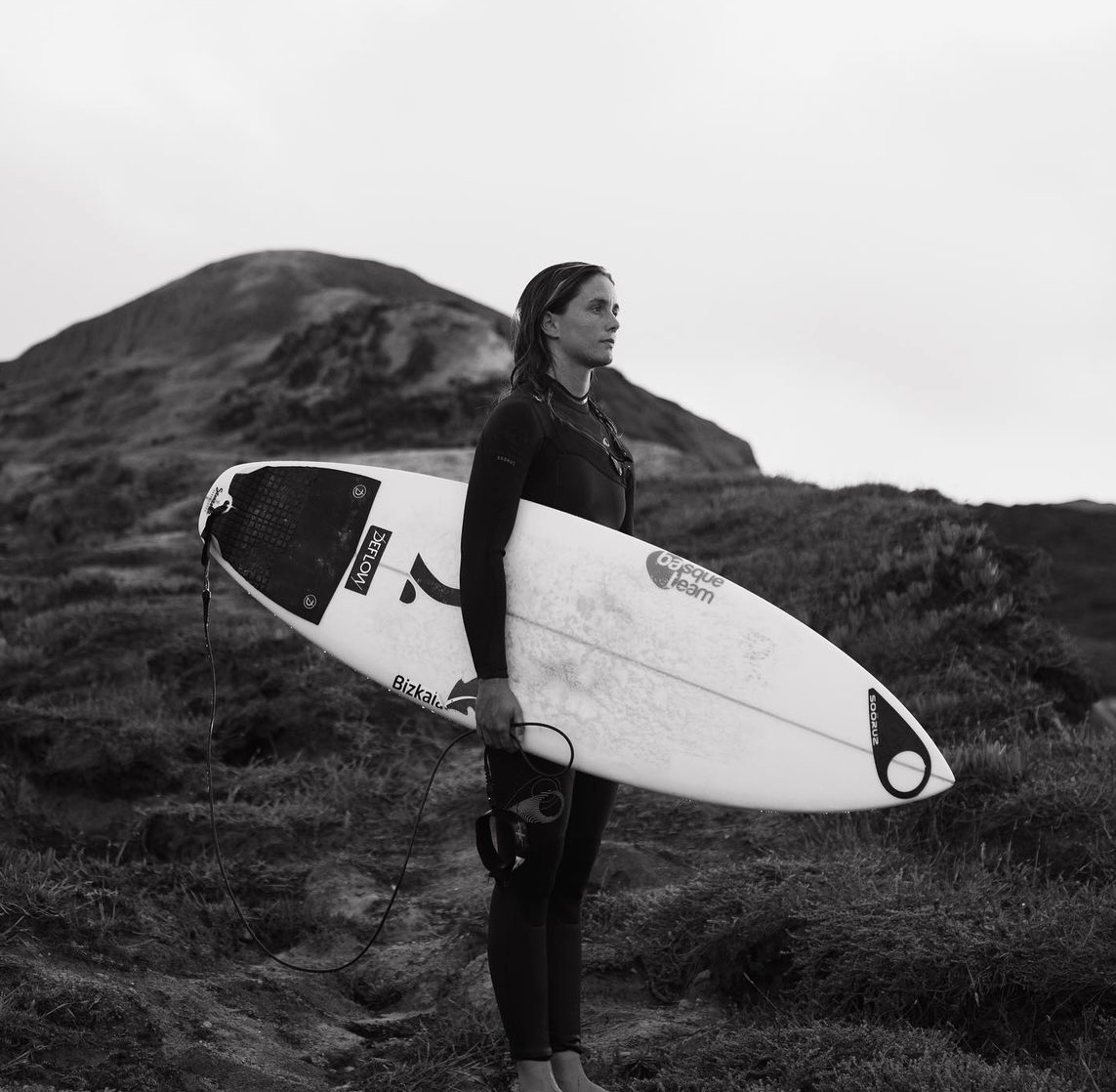
Leticia Canales, referente nacional, europeo (Bilbao, 2 de marzo de 1995) es una surfista profesional, campeona de Europa de surf en 2021, y campeona de España absoluta en ocho ocasiones – cuatro de ellas en la categoría absoluta. En 2021 ha sido deportista olímpica en los juegos de Tokio 2020. Podéis encontrarla disfrutando de las olas en Sopela junto a su hermana gemela Loiola y en la alta competición de la World Surf League femenina con su actual puesto nº 35 en la temporada 22/23.
Leticia Canales, national and European reference (Bilbao, March 2, 1995) is a professional surfer, European surfing champion in 2021, and champion of absolute Spain eight times – four of them in the absolute category. In 2021 she has been an Olympian at the Tokyo 2020 Games. You can find her enjoying the waves in Sopela with her twin sister Loiola and in the high competition of the Women’s World Surf League with her current 35th place in the 2022/2023 season.
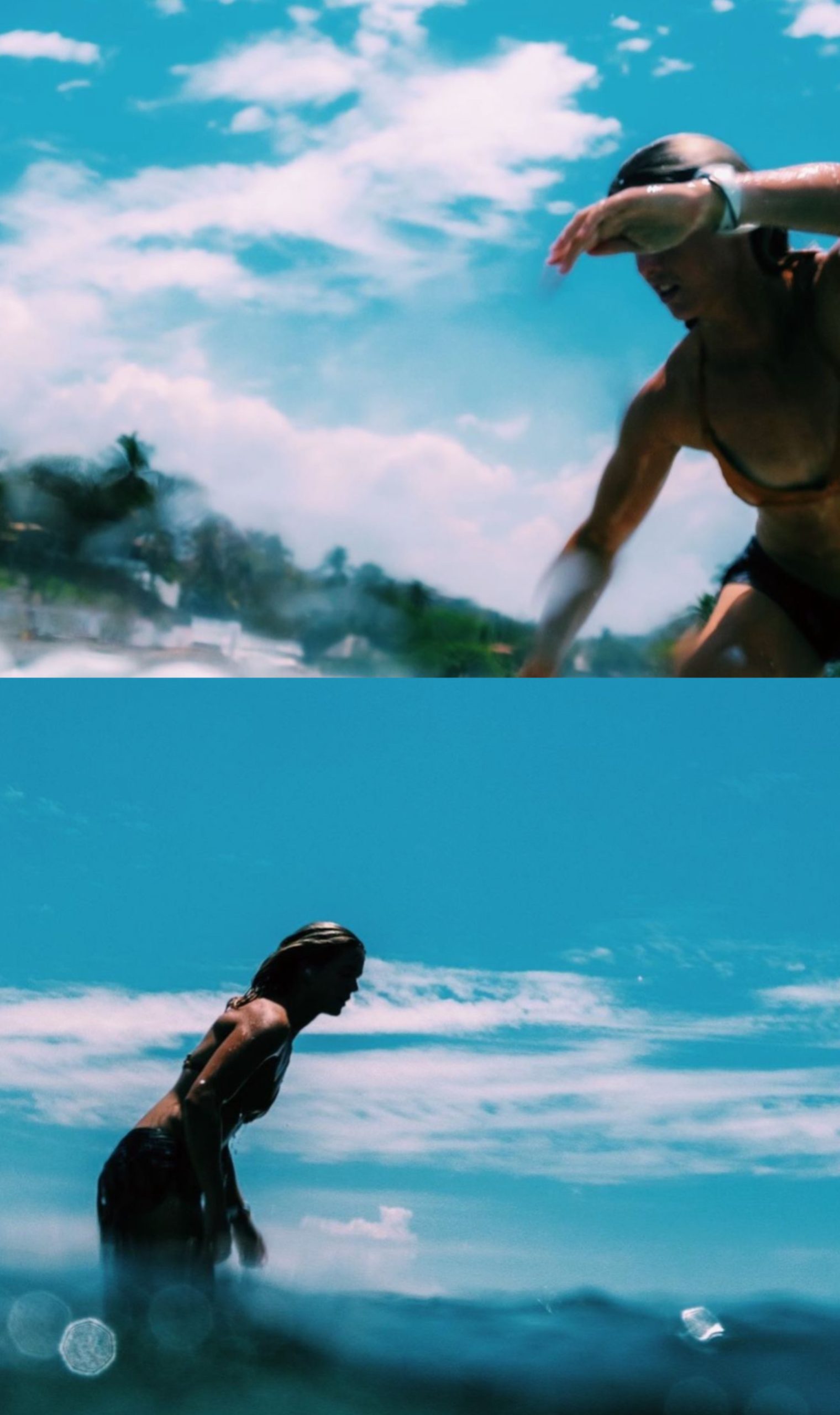
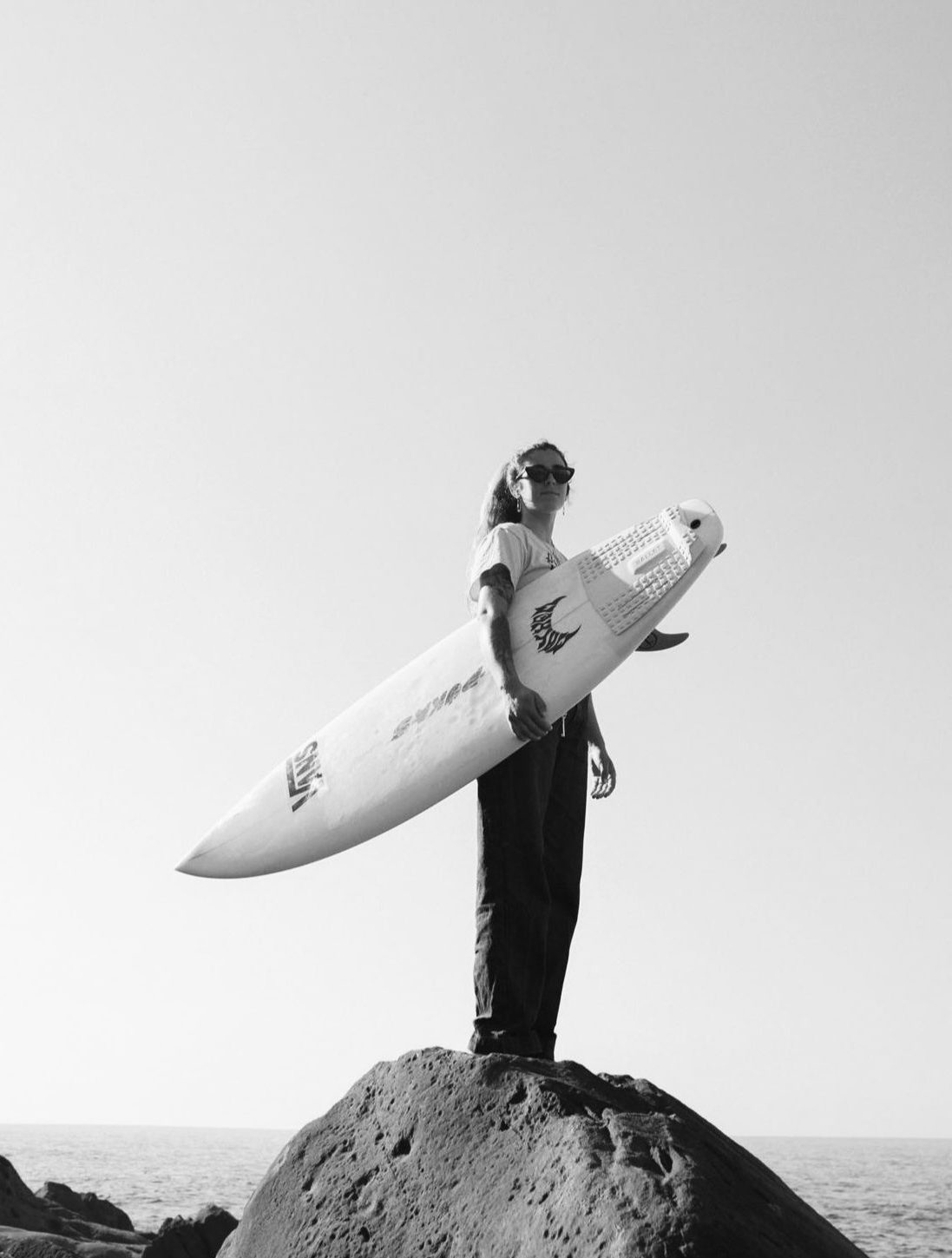
Ainara Aymat, movimiento, originalidad y fuerza dentro y fuera de agua (Zarautz, 15 de diciembre de 1996) el adjetivo free surfer define a está surfista que huye de modas y estereotipos embarcándose en busca de aventuras por todo el mundo a través de las diferentes olas; descubriendo la parte más salvaje y libre de este deporte. Ainara actualmente compite a nivel internacional y a la vez está presentando “Tandem” junto a su sponsor Vans, protagonizando este films junto a la surfista Sophie Bell.
Ainara Aymat, turns, originality and strength in and out of the ocean (Zarautz, December 15, 1996) the adjective free surfer defines this surfer who flees from fashions and stereotypes, embarking in search of adventures around the world through the different waves; discovering the wildest and freest part of this sport. Ainara is currently competing internationally and at the same time is presenting «Tandem« with her sponsor Vans, starring in this film with surfer Sophie Bell.
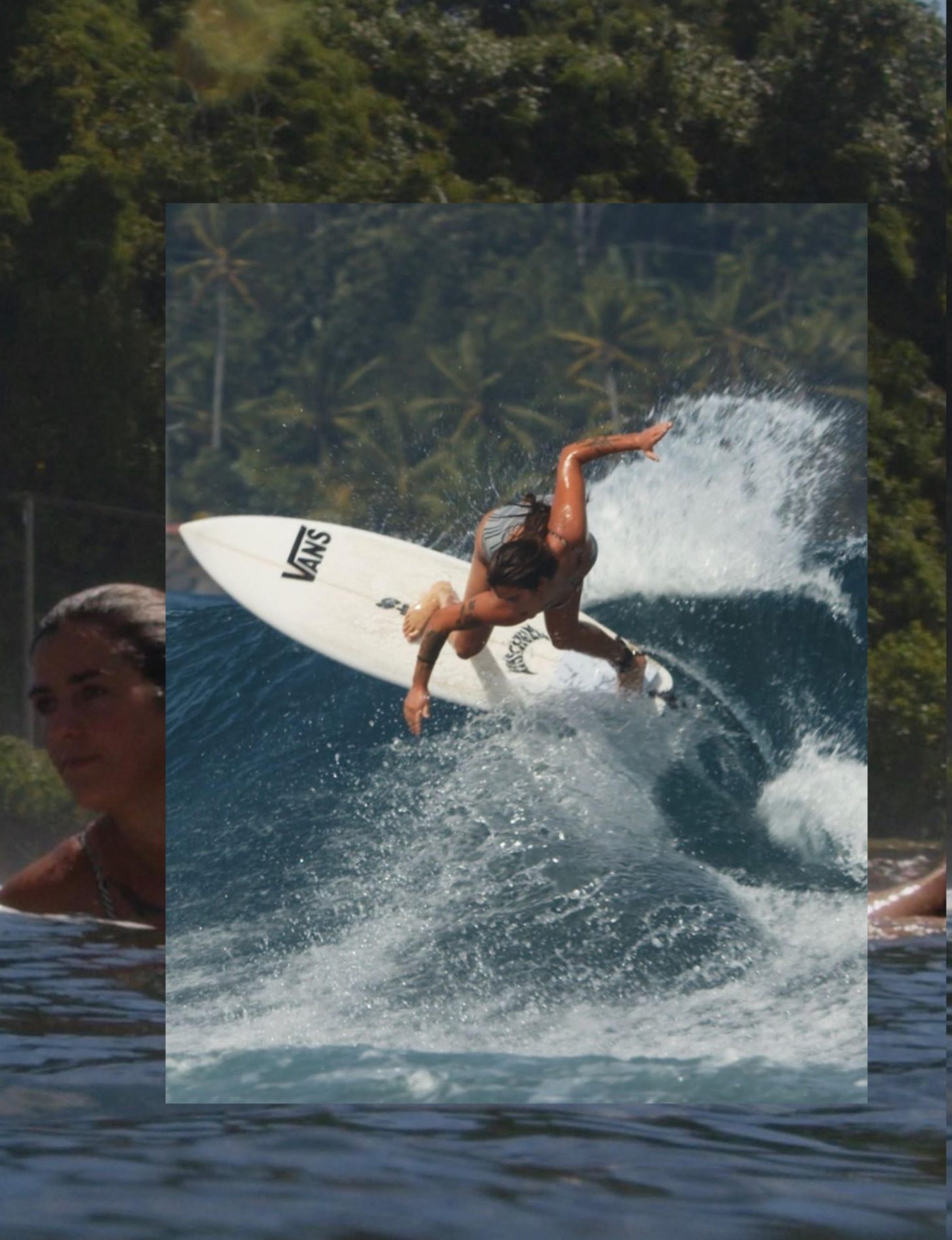
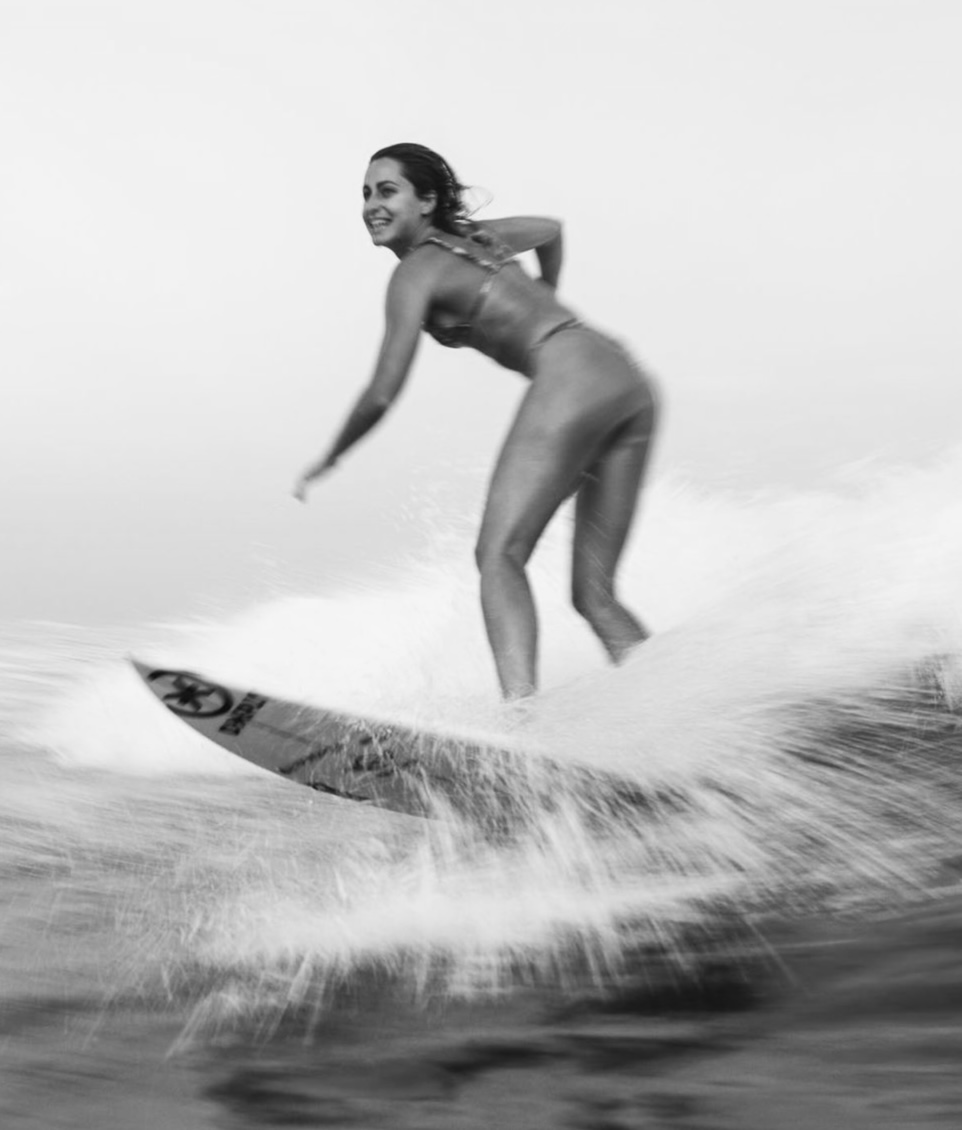
LUCÍA MARTIÑO, es uno de los rostros más conocidos del surf nacional (Gijón 6 de enero de 1994) la surfista asturiana encontró en el surf una pasión que le hizo convertirse en profesional de este deporte a temprana edad, consiguiendo un amplio reconocimiento y palmarés. Ha sido campeona de España en múltiples ocasiones, hasta los 20 años compitió en el Circuito Profesional Junior Europeo quedando 3ª en el ranking final del circuito. Actualmente, compite en la World Surf League femenina, su mejor puesto ha sido el nº 45 dentro del top mundial. Gracias a este deporte conciencia a sus seguidores de la importancia del cuidado y respeto de nuestras playas y mares de todo el mundo a través de sus colaboraciones como modelo.
LUCÍA MARTIÑO, is one of the best known faces of national surfing (Gijon January 6, 1994) the Asturian surfer found in surfing a passion that made her become a professional in this sport at an early age, achieving wide recognition and honors. She has been champion of Spain on multiple occasions, until the age of 20 she competed in the European Junior Professional Circuit being 3rd in the final ranking of the circuit. Currently, she competes in the women’s World Surf League, her best position has been the 45th in the world top. Thanks to this sport, she makes her followers aware of the importance of care and respect for our beaches and seas around the world through her collaborations as a model.
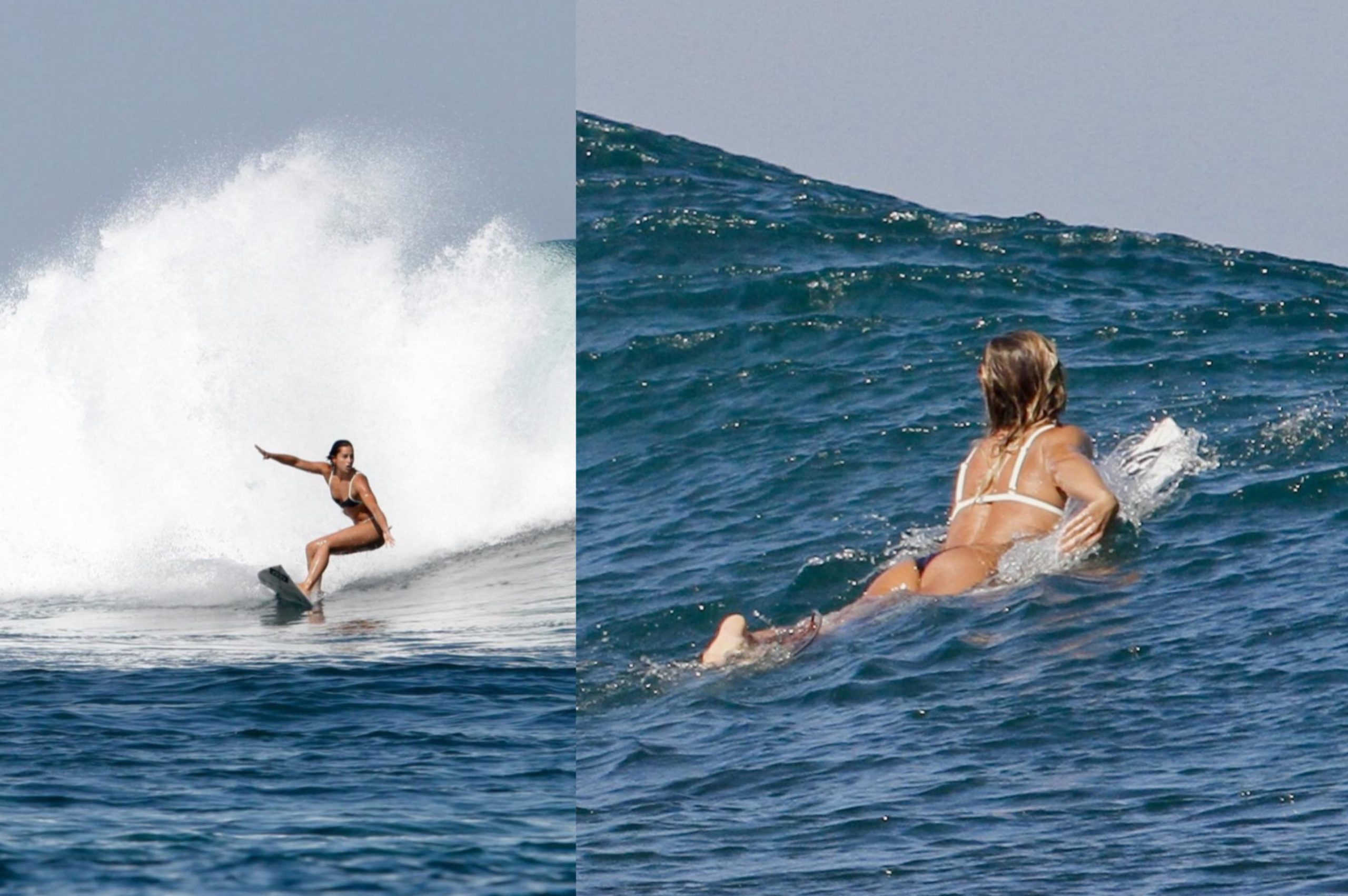
1º. ¿Cuáles fueron vuestros inicios dentro del surf ? ¿Por qué motivos empezasteis a practicar este tipo de deporte y qué tipo de sensaciones os transmitido para que llegara a formar parte de vosotras?
1º. What were your beginnings in surfing? Why did you start practicing this kind of sport and what kind of sensations did it transmit to you so that it became part of you?
LETICIA CANALES – I started surfing when I was only 6 years old, it was at Atxabiribil beach in Sopela. The reasons are not clear, I just followed my older sister and my aita, who spent a lot of time in the sea and had an incredible time. I was too young to make sense of what would later become my profession. Over the years, surfing has given me different sensations, like everything in life, it has given me unimaginable moments and also sad moments. But there is always a common denominator, I have an incredible time in the water and I want to repeat. Of course, when I decided to dedicate myself to it 100% everything changed, it became more serious, but I am proud to have been able to handle well the different situations that have arisen.
AINARA AYMAT – Empecé a la edad de 5 años junto con mi hermana mayor. Mi madre y padre nos enseñaron. A ellos les encanta el surf y aun siguen practicándolo.
Las sensaciones son mil, y en palabras no es fácil describirlas. Pueden llegar a ser muy bonitas y otras veces muy desagradables, pero la clave está en conseguir un balance entre ambas.
AINARA AYMAT – I started at the age of 5 together with my older sister. My mother and father taught us. They love surfing and are still practicing it.
The sensations are a thousand, and it is not easy to describe them in words. They can be very beautiful and sometimes very unpleasant, but the key is to strike a balance between the two.
LUCIA MARTIÑO – Pasaba todos los veranos en la playa con mis primos y amigos, nos encantaba estar en el agua. Teníamos unos bodyboards en los que nos poníamos de pie pero no sabíamos exactamente lo que era el surf, no teníamos ni idea de qué era un deporte, ni tampoco nuestras familias pero nos lo pasábamos genial. Un día mi madre conoció a unos chicos que eran cántabros y llevaban las distribución de unas tablas de surf (le hacía mucha gracia porque eran pequeñitas para niños pero de plástico) entonces, les preguntó a ver si podía ser un buen regalo para las navidades, ellos le contestaron que debían de probar antes una clase si nos habíamos probado antes el surf y nos dieron una clase en la playa de Vega entre Cantabria y Asturias a mitad de camino, mis primos, unos amigos y yo dimos una clase y nos encantó. El regalo estrella para cada uno esas navidades fue una tabla de esas pequeñitas y de plástico, la tuvimos en casa todos hasta que acabamos el colegio en junio, y justo ahí abrió la primera escuela de surf en Gijón y nos apuntamos al cursillo de semana y así estuvimos todo el verano como activas extraescolar y nos encantaba.
Desde pequeña había practicado muchísimos deportes desde vela, equitación, karate, natación, atletismo… había probado muchos, me encanta el deporte. Había esquiado los findes de semana con mi familia, pero desde que probé el surf fue una sensación totalmente diferente estar en el mar y darme la adrenalina que me daba bajar mis primeras olas, deliszarme sobre ellas era increíble. La verdad, me encantaba estar en el agua desde pequeñita y fue increíble poder descubrir el surf y engancharme a él de esa manera.
LUCIA MARTIÑO – Every summer at the beach with my cousins and friends, we loved being in the water. We had bodyboards that we would stand up on but we didn’t know exactly what surfing was, we had no idea what a sport was, neither did our families but we had a great time. One day my mother met some guys who were from Cantabria and had the distribution of some surfboards (she was very funny because they were tiny for children but made of plastic) so she asked them to see if it could be a good gift for Christmas, they replied that they had to try a class before if we had tried surfing before and they gave us a class on the beach of Vega between Cantabria and Asturias halfway, my cousins, some friends and I gave a class and we loved it. The star gift for each one of us that Christmas was one of those little plastic boards, we all had it at home until we finished school in June, and right there opened the first surf school in Gijon and we signed up for the week course and so we were all summer as extracurricular activities and we loved it.
Since I was little I had practiced many sports from sailing, horseback riding, karate, swimming, athletics … I had tried many, I love sports. I had skied on weekends with my family, but since I tried surfing it was a totally different feeling to be in the sea and give me the adrenaline that gave me to go down my first waves, to glide over them was incredible. The truth is, I loved being in the water since I was a little girl and it was incredible to discover surfing and get hooked to it that way.
2º. The modern and current surf industry has not always treated women equally both in competitions and in the visibility of it. Have you ever felt that you are the only girl in the water? What has been your experience in the world of competition? How is the current situation in surfing?
LETICIA CANALES – Estoy totalmente de acuerdo con tu afirmación, la industria y el mundo del surf han tenido que evolucionar, como la misma sociedad. Normalmente, sigo siendo la única mujer en el agua, también es verdad, que somos 6 en el estado nacional que nos podemos dedicar a este deporte al 100% y pasamos muchas horas en la mar . Aunque, debo decir que he visto un aumento de chicas cada año y las próximas generaciones darán que hablar seguro.
Mi experiencia en el mundo de la competición, ha sido siempre muy buena. He podido cumplir muchos sueños y ganas campeonatos importantes. Fue increíble competir de tu a tu en una semifinal contra la campeona del mundo Carissa Moore y hacerle cara. Pero la otra cara es la que no se ve, cuando pierdes, cuando no consigues tus objetivos, cuando te lesionas…Esta claro, aunque sea un deporte individual, el equipo que te rodea debe ser gente que te apoye en las buenas y en las malas, y construir una confianza para que todos podamos llegar donde queremos.
LETICIA CANALES –
I totally agree with your statement, the industry and the world of surfing have had to evolve, as the same society. Normally, I am still the only woman in the water, it is also true that we are 6 in the national state that we can dedicate ourselves to this sport 100% and spend many hours at sea. Although, I must say that I have seen an increase of girls every year and the next generations will surely give something to talk about.
My experience in the world of competition has always been very good. I have been able to fulfill many dreams and win important championships. It was incredible to compete face to face in a semifinal against the world champion Carissa Moore and make her face. But the other side is the one you don’t see, when you lose, when you don’t achieve your goals, when you get injured… It’s clear, even though it’s an individual sport, the team around you must be people who support you through thick and thin, and build trust so that we can all get where we want to be.
The world of surfing today is very expensive. Both economically and the level of surfing. The sport has evolved and every time, mistakes are more expensive in the water. At the economic level, except for the scholarships that we can get to have, the thing this raw, but even so, we get a budget to continue doing what most fills us and we like.

3º. De todos tus viajes, ¿En qué país te has encontrado que hubieras más afición por el surf entre las chicas? ¿Qué sientes al ver más surfistas femeninas cuando entras al agua?
3º. From all your travels, in which country have you found that you had more love for surfing among girls? What do you feel when you see more female surfers when you enter the ocean?
AINARA AYMAT – Nunca me he fijado mucho en eso, para mi siempre ha sido muy natural encontrarme con chicos o chicas en el agua. Pero es verdad que en casa hay veces que hay más mujeres que hombres en el pico.
AINARA AYMAT – I have never paid much attention to that, for me it has always been very natural to meet boys or girls in the water. But it is true that at home there are times when there are more women than men on the peak.
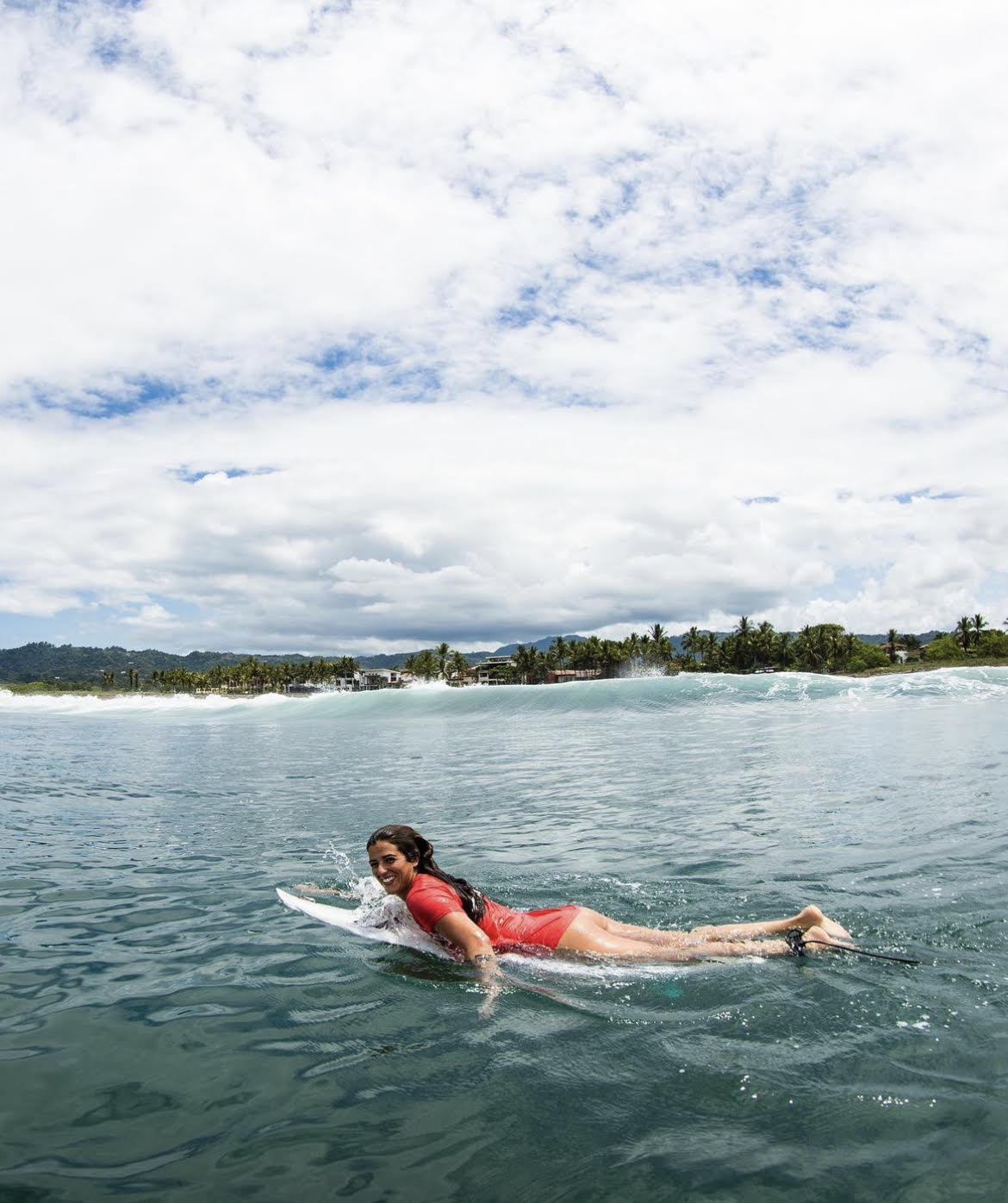
4º. Has viajado por todo el mundo surfeando las mejores olas, ¿En algún país que has estado durante estos años, te has encontrado con una situación de desigualdad simplemente por el hecho de ser mujer?
4º. You have traveled around the world surfing the best waves, in any country that you have been during these years, have you encountered a situation of inequality simply because you are a woman?
LUCÍA MARTIÑO – Si, he viajado mucho a muchísimos países. Con el surf conocemos países muy diferentes con culturas totalmente diferentes que en muchos de ellos te das cuenta de la desigualdad que hay por el hecho de ser mujer. Por ejemplo ahora, acabo de llegar de Indonesia, de la isla de Sumbawa (al sur de Bali) la religión allí es musulmana y es verdad que en el agua todavía a día de hoy no hay ninguna chica en el agua y en 13 años desde que fui por primera vez no ha cambiado. Da bastante pena que en esos países, sobre todo por la religión, la desigualdad entre hombres y mujeres, todavía no haya generaciones de chicas que empiecen a surfear. Este es un ejemplo muy reciente que he visto y daba pena, me refiero sobretodo a las chicas locales, sí que hay muchas mujeres como yo que viajan allí para surfear, surfistas de todo el mundo y los países, chicas de todas partes pero allí no había ningún chica local de la zona. En Bali si que hay, al final Bali es una isla mucho más abierta, la religión es hinduista, también hay musulmanes pero está muy internacionalizada que una isla que es más local para ver una chica en el agua.
LUCÍA MARTIÑO – Yes, I have traveled a lot to many countries. With surfing we know very different countries with totally different cultures in many of them you realize the inequality that exists because of being a woman. For example now, I just arrived from Indonesia, from the island of Sumbawa (south of Bali) the religion there is Muslim and it is true that in the water still to this day there is no girl in the water and in 13 years since I went for the first time has not changed. It is quite a pity that in those countries, especially because of religion, inequality between men and women, there are still no generations of girls who start surfing. This is a very recent example that I have seen and it was a shame, I refer especially to the local girls, yes there are many women like me who travel there to surf, surfers from all over the world and countries, girls from everywhere but there was no local girl from the area. In Bali if that there is, at the end Bali is a much more open island, the religion is Hindu, there are also Muslims but it is very internationalized than an island that is more local to see a girl in the water.
5º ¿Cómo es la situación actual de surf femenino? ¿Cuáles son los puntos fuertes? ¿En qué se ha mejorado? ¿Compañeras surfistas que te inspiren?
5º How is the current situation of women’s surfing? What are the strong points? How has it improved? Do you have inspiring surfing partners?
AINARA AYMAT – Yo veo que va mejorando poco a poco. Se intentan hacer cambios y eso es una buena señal. Creo que el punto fuerte o la clave aquí es la actitud que estamos tomando las mujeres, de mantenernos firmes a lo que somos y a lo que aspiramos sin que la sociedad nos lo impida. Me inspiran todas de alguna manera o de otra, por ejemplo Garazi Sánchez, Laura Coviella, Sophie Bell, LeeAnn Curren, etc.
LUCÍA MARTIÑO – El surf femenino es increíble lo que ha crecido el nivel. En España tenemos generaciones increíbles que vienen dando muy fuerte sobre todo hay muchísimas chicas que empiezan más que chicos, es verdad que es increíble poder verlo. Yo me acuerdo de pequeña que faltaba esa amiga o grupos de chicas que surfeasen conmigo y ahora se puede ver lo que viene. Bueno, ya a nivel internacional las generaciones que hay americanas y australianas, son increíbles como niñas de 10 / 12 años hacen unas maniobras espectaculares. También, con el crecimiento de las piscinas de olas, pues están mejorando mucho lo que es el nivel. El nivel de chicas ahora está muy muy alto.
Los puntos fuertes que tienen ahora las nueva generaciones son sobre todo las piscinas de olas, nosotros en su día no tuvimos y la verdad que poder repetir la misma maniobra desde que empiezas a surfear es muy bueno. Por supuesto, combinándolo con el mar, pero es verdad que las mejoras son más rápidas si tienes la misma ola siempre y puedes repetir las maniobras. Nosotros nuestra generación teníamos que saber dónde posicionarte en el mar, pasar las olas haciendo patos cuando estaba el mar más grande, que quizá solo podías coger una ola en una sesión, también la gente que al final tenías que “luchar” contra ellos e incluso yo contra mis amigos, que eran todo chicos, al final del baño ellos habían cogido 100 olas y yo había cogido 3, entonces es un punto a favor de las nuevas generaciones y también la posibilidad de viajar, antes era quizás más difícil y ahora te mueves por todo el mundo súper fácil y esas nuevas generaciones ya están saliendo con 8 o 10 años.
Una compañera surfista que me ha ayudado a inspirarme es Johanne Defay que es una chica es muy amiga mía des pequeñas, viajamos juntas a las pro junior en Europa y la verdad es que su esfuerzo y trabajo dieron sus frutos, a día de hoy está en la Élite Mundial, haciendo muy buenos resultados y ella me inspira porque al final se su historia y por todo lo que ha trabajado hasta llegar ahí.
AINARA AYMAT – I see that it is improving little by little. They are trying to make changes and that is a good sign. I think the strong point or the key here is the attitude that we women are taking, to stand firm to what we are and what we aspire to without society preventing us from doing so. I am inspired by all of them in one way or another, for example Garazi Sánchez, Laura Coviella, Sophie Bell, LeeAnn Curren, etc.
LUCÍA MARTIÑO – Women’s surfing is incredible how much the level has grown. In Spain we have incredible generations that are giving very strong especially there are many girls who start more than boys, it is true that it is incredible to see it. I remember when I was a little girl that I was missing that friend or group of girls who surfed with me and now you can see what’s coming. Well, at an international level, the American and Australian generations are incredible as girls of 10 / 12 years old do spectacular maneuvers. Also, with the growth of the wave pools, the level is improving a lot. The level of girls is now very, very high.
The strong points that the new generations have now are above all the wave pools, we didn’t have them back in the day and the truth is that being able to repeat the same maneuver since you start surfing is very good. Of course, combining it with the sea, but it is true that the improvements are faster if you have the same wave always and you can repeat the maneuvers. We our generation had to know where to position yourself in the sea, pass the waves making ducks when the sea was bigger, that maybe you could only catch one wave in a session, also the people that at the end you had to «fight» against them and even me against my friends, who were all boys, at the end of the swim they had caught 100 waves and I had caught 3, then it is a point in favor of the new generations and also the possibility of traveling, before it was perhaps more difficult and now you move around the world super easy and those new generations are already leaving with 8 or 10 years.
A fellow surfer who has helped me to inspire me is Johanne Defay, she is a girl who is a very good friend of mine since she was a child, we traveled together to the junior pro in Europe and the truth is that her effort and work paid off, today she is in the World Elite, doing very good results and she inspires me because at the end I know her story and for everything she has worked to get there.

6º. Hablando de surfing femenino. En las islas del Pacifico culturas como la Hawaiana o de la Polinesia, adoraban a diosas que surfeaban, siendo una actividad más demandada y practicada por las mujeres que los hombres. ¿Qué surfista femenina ha sido o es para ti una influencia en la Historia del surf? Cuéntanos sobre tu surf para conocerte más.
6º. About female surfing. In the Pacific islands cultures like the Hawaiian or Polynesian, worshiped goddesses who surfed, being an activity more demanded and practiced by women than men. What female surfer has been or is for you an influence in the history of surfing? Tell us about your surfing to know more about you.
LETICIA CANALES – Según he podido ir avanzando y evolucionando, he podido tener influencia de distintas surfistas, como las hawaianas Kealla Kenely, Carissa Moore; las australianas Chelsea Hedge y Steph Gilmore; y la estadounidense Courtney Colongue.
LETICIA CANALES – As I’ve been able to advance and evolve, I’ve been influenced by different surfers, such as Hawaiian women Kealla Kenely, Carissa Moore; Australian women Chelsea Hedge and Steph Gilmore; and American Courtney Colongue.
My surfing has a mix of all these women. It is characterized by style, flow and strong maneuvers. I also have innovative maneuvers, like laybacks and I’m starting to do aereos, which are flights. These last ones I have to perfect them more until they can go out in competitions.
LETICIA CANALES – Según he podido ir avanzando y evolucionando, he podido tener influencia de distintas surfistas, como las hawaianas Kealla Kenely, Carissa Moore; las australianas Chelsea Hedge y Steph Gilmore; y la estadounidense Courtney Colongue.
Mi surf tiene mezcla de todas estas mujeres. Se caracteriza por estilo, flow y maniobras fuertes. Tengo maniobras innovadoras también, como los Laybacks y empiezo a hacer aereos, que son vuelos. Estos últimos debo perfeccionarlos mas hasta que puedan salir en las competiciones
LETICIA CANALES – As I’ve been able to progress and evolve, I’ve been influenced by different surfers, such as Hawaiian women Kealla Kenely, Carissa Moore; Australian women Chelsea Hedge and Steph Gilmore; and American Courtney Colongue.
My surfing has a mix of all these women. It is characterized by style, flow and strong maneuvers. I also have innovative maneuvers, like laybacks and I’m starting to do aereos, which are flights. These last ones I have to perfect them more until they can go out in competitions.
7º. «Isabel Letham, Mary Ann Wawkins, Marge Calhoun, Margo Oberg, incluyendo a Laura Revuelta», han sido mujeres que han realizado una gran labor a través de su surfing ¿Cómo podríamos llegar a más niñas, chicas y mujeres que les apeteciera comenzar a practicar este deporte?
7º. «Isabel Letham, Mary Ann Wawkins, Marge Calhoun, Margo Oberg, including Laura Revuelta» have been women who have done great work through their surfing. How could we reach more girls and women who would like to start surfing?
LETICIA CANALES – Hoy en día, es dando visibilidad, pero de calidad. Las redes sociales son una buena herramienta, pero tiene doble filo. Se debe utilizarlas bien e informar bien, para que todas esas chicas, niñas o mujeres puedan tener referentes reales y que puedan acercarse al surf real.
AINARA AYMAT – Quizás enseñando ejemplos de más mujeres que lo practican, para que vean que es algo divertido y que lo puede practicar cualquier persona.
LUCÍA MARTIÑO – Yo siempre animo que no hay ni edad, ni sexo, ni límite para empezar a surfear. A todo el mundo que le apetezca tiene que empezar porque desde el momento uno disfrutas, incluso aunque no te pongas de pie a la primera, al final disfrutas solamente con estar en contacto con el mar, estar remando en la tabla, dándote revolcones en las espumas, deslizándote incluso echada en la tabla de puede disfrutar. Luego el surf en un deporte que es muy exigente en cuanto preparación física, pero hay personas que se les da bien desde el principio, yo animo a todo el mundo a que pruebe porque es un deporte que si te gusta, te engancha.
LETICIA CANALES – Today, it is giving visibility, but quality visibility. Social networks are a good tool, but they are double-edged. They must be used well and well informed, so that all these girls, girls or women can have real references and can approach the real surfing.
AINARA AYMAT – Maybe showing examples of more women who practice it, so they can see that it is something fun and that anyone can practice it.
LUCÍA MARTIÑO – I always encourage that there is no age, no sex, no limit to start surfing. Everyone who feels like it should start because from the first moment you enjoy it, even if you don’t stand up the first time, in the end you enjoy just being in contact with the sea, paddling on the board, rolling around in the foam, sliding even lying on the board, you can enjoy it. Then surfing is a sport that is very demanding in terms of physical preparation, but there are people who are good at it from the beginning, I encourage everyone to try it because it is a sport that if you like it, you get hooked.
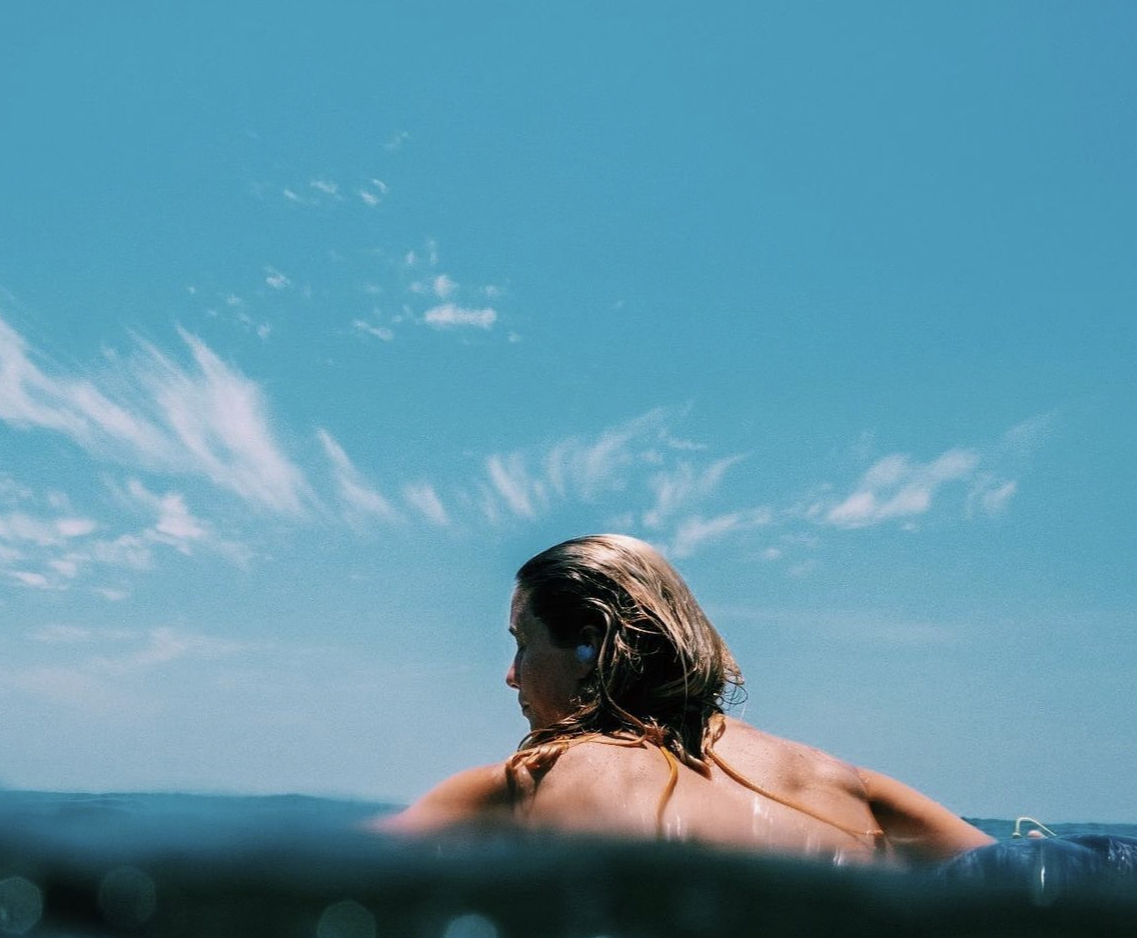
8º. Un tema importante del que no podemos olvidarnos, es el océano. La sostenibilidad y la educación en el cuidado del medio son de vital importancia para futuras generaciones, ¿Cómo surfista profesional cuáles son las medidas más importantes para dar a conocer entre nuestros jóvenes?
8º. An important issue that we cannot forget is the ocean. Sustainability and education in the care of the environment are of vital importance for future generations. As a professional surfer, what are the most important measures to raise awareness among our young people?
LETICIA CANALES – El océano, es un elemento vital para el desarrollo de la tierra, es equivalente al corazón y los pulmones de una persona. Si estos fallan, la persona muere; y así pasará con la tierra.
Está claro que podemos darle la vuelta e intentar que esta contaminación se vaya reduciendo; en nuestra mano está hacer un buen uso del agua, un buen reciclaje, no tirando plásticos a la mar, utilizar materiales que no contaminen tanto las aguas…al final, todo se hecha al mar, y no nos damos cuenta que casi el 1/4 parte de las especies que viven en la tierra, están en los océanos.
AINARA AYMAT – Creo que la alimentación es una de las cosas que más me llegan a mi. Evitar destruir el ciclo vital de este planeta, y creo que ser vegana puede ayudar muchísimo en esto. Conciencia en los productos que compramos y el uso que les damos. Enseñar a conseguir un balance.
LUCÍA MARTIÑO – Ahora es súper importante concienciarnos del cuidado del medio ambiente y también de nuestros océanos. Yo la verdad cada día estoy más concienciada, es muy importante cuidar nuestras playas, consumir con cabeza, reducir el consumo de plásticos en el día a día es súper importante. Yo ahora mismo estoy intentando cambiar pequeñas cosas que al final en un periodo de tiempo hacen una suma grande. También el reciclar, consumir con cabeza es muy importante. El cuidado de nuestras playas es vital para que las próximas generaciones puedan seguir disfrutando de ellos como hecho nosotros y sería una pena que no lo pudiesen hacer, con pocas acciones todos podemos aportar algo y cuidar nuestros mares.
LETICIA CANALES – The ocean, a vital element for the development of the earth, is equivalent to a person’s heart and lungs. If these fail, the person dies; and so it will happen with the earth.
The biggest problem that exists in the ocean has been created by humans, plastic. And as a surfer, I see a lot of this + water pollution from boats, drains etc…
It is clear that we can turn it around and try to reduce this pollution; in our hand is to make a good use of water, good recycling, not throwing plastics into the sea, use materials that do not pollute the water so much … in the end, everything is thrown into the sea, and we do not realize that almost 1/4 of the species that live on earth, are in the oceans.
AINARA AYMAT – I think that food is one of the things that I feel most strongly about. Avoid destroying the life cycle of this planet, and I think being vegan can help a lot in this. Awareness in the products we buy and the use we give them. Teaching to achieve a balance.
LUCÍA MARTIÑO – Now it is very important to be aware of the care of the environment and also of our oceans. I am becoming more aware every day, it is very important to take care of our beaches, to consume wisely, to reduce the consumption of plastics on a daily basis is very important. Right now I am trying to change small things that in the end in a period of time make a big sum. Also recycling, consuming wisely is very important. Taking care of our beaches is vital so that the next generations can continue to enjoy them as we did and it would be a shame if they could not do it, with a few actions we can all contribute something and take care of our seas.
9º. Para finalizar, ¿Qué próximo objetivo tienes a la vista y dónde podemos seguirte?
9º. Finally, what is your next target and where can we follow you?
LETICIA CANALES – Mis próximos objetivos a corto plazo están en el circuito europeo de la wsl que se va a disputar entre agosto y septiembre; y como medio plazo, el próximo mundial ISA en Puerto Rico. Me podéis seguir siempre que queráis, en las redes sociales.
AINARA AYMAT – Como siempre disfrutar del tiempo que estoy en casa y viajar cuando me sea posible 🙂
LUCÍA MARTIÑO – He estado esta primera mitad de año centrada en bastantes viajas, proyectos, viajes. Intentado viajar viajes para hacer el máximo número de horas en el agua, sobre todo para ir a lugares con buen clima para estar el mayor tiempo posible y entrenar.
Competitivamente, es verdad que he estado bastante parada la primera mitad de año no ha habido muchísimos campeonatos y empiezo más intenso a competir a finales de agosto en las pruebas QS europeas de esta temporada y luego también me voy a centrar en las pueblas de la liga Iberdrola que hay a final de años que son las que mayor puntuación dan, son en olas que me gustan.
Entonces he estado disfrutando mucho de lo que es el surfing y su presencia que hacía años que no podía viajar así como lo he estado haciendo solamente disfrutando del surfing, sin ir a competir, la verdad estoy feliz por eso. A veces se nos olvida, lo que es el surfing cuando estamos compitiendo y nos disfrutas tanto de los viajes de los viajes, de las olas o de la experiencia y lo he estado haciendo hasta ahora, ya está segunda mitad de año me voy a centrar más en competir.
Entonces, bueno estoy contenta de haber hecho esto y también tengo muchísimos proyectos por delante de otros viajes y otras experiencias. Yo estoy feliz.
LETICIA CANALES – My next short-term goals are in the wsl European circuit that will take place between August and September; and in the medium term, the next ISA World Championship in Puerto Rico. You can follow me whenever you want, on social networks.
See you at sea!
AINARA AYMAT – As always enjoy the time I’m at home and travel when possible 🙂
LUCÍA MARTIÑO – I’ve been this first half of the year focused on a lot of traveling, projects, trips. Trying to travel trips to make the maximum number of hours on the water, especially to go to places with good weather to stay as long as possible and train.
Competitively, it is true that I have been quite stopped the first half of the year there have not been many championships and I start more intense to compete in late August in the European QS events of this season and then I will also focus on the Iberdrola league that there are at the end of years that are the ones that give the highest score, are in waves that I like.
Then I have been enjoying a lot of surfing and its presence that for years I could not travel as well as I have been doing just enjoying surfing, without going to compete, the truth is I’m happy about it. Sometimes we forget what surfing is when we are competing and we enjoy the trips, the waves or the experience and I’ve been doing it until now, and this second half of the year I’m going to focus more on competing.
So, well, I’m happy to have done this and I also have a lot of projects ahead of me for other trips and other experiences. I am happy.
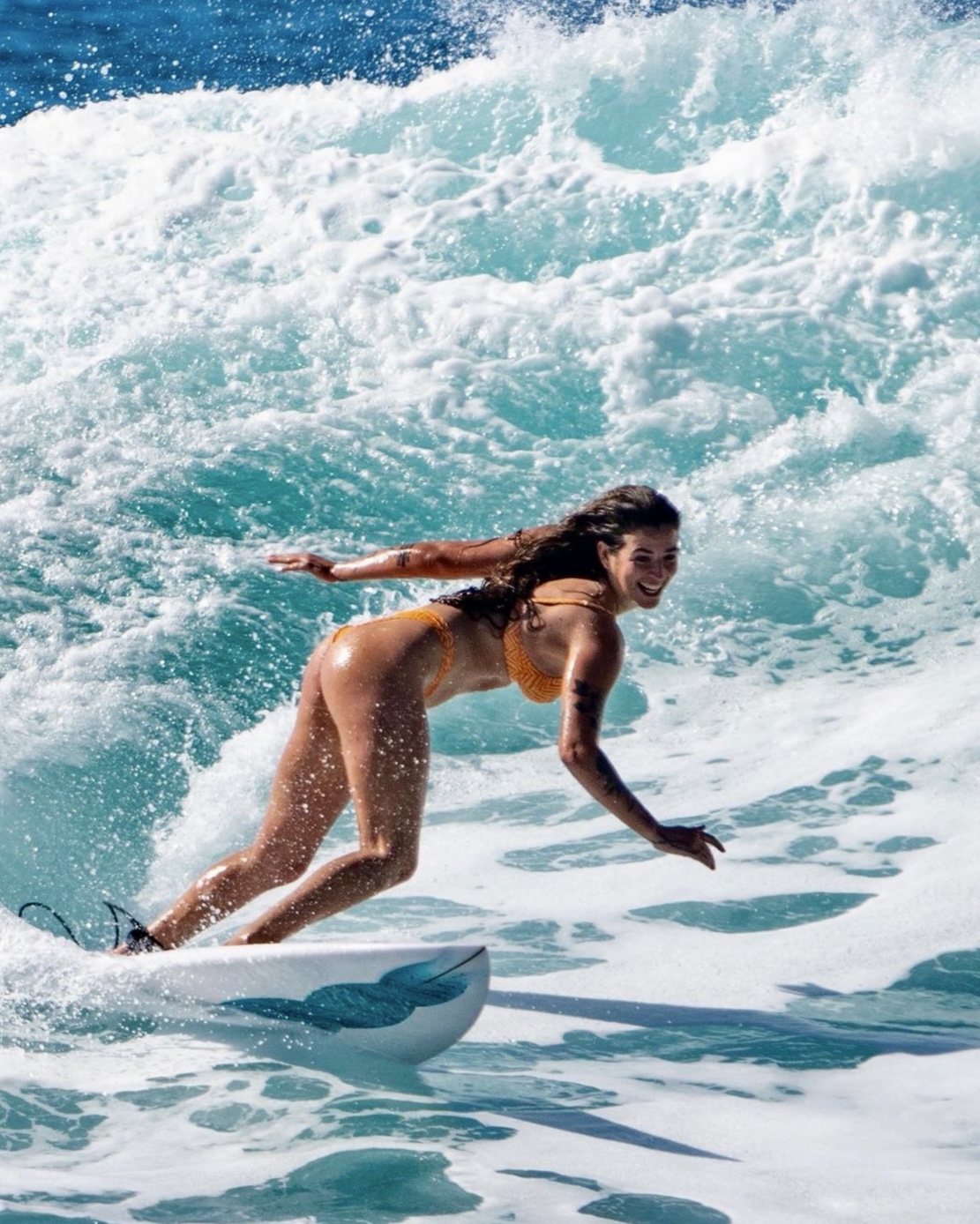
CREDITS
BY ROSANA PÉREZ
PHOTO LETICIA CANALES: Rotem Goldner & Edu Bartolomé
PHOTO AINARA AYMAT: Oscar Valencia, Water Bear Foto , Javi postigo & Jimmy Wilson
PHOTO LUCÍA MARTIÑO: Carlos Ferrera
